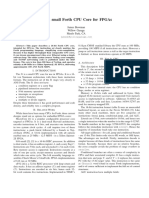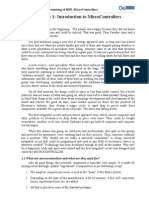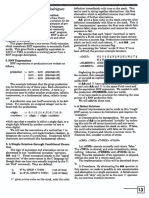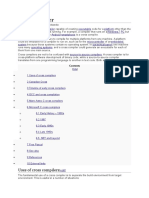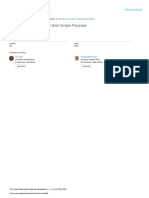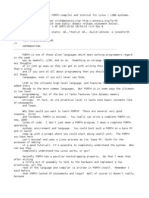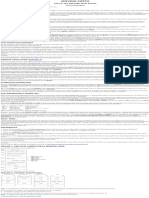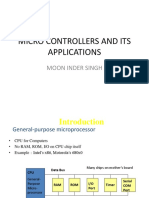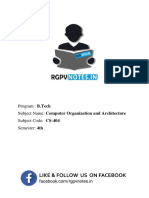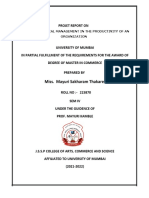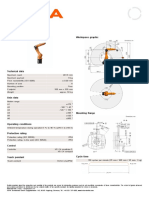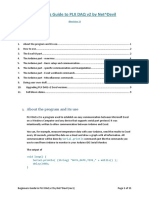100% found this document useful (1 vote)
317 views24 pagesImplementing FORTH On My 6502 Computer - Export
The document describes the author's implementation of the FORTH programming language on their 6502 breadboard computer. It provides background on the 6502 architecture including registers, addressing modes, and stack. It then details the author's FORTH implementation, including how it uses the zero page for a data stack and dictionary, and how words are executed via an inner and outer interpreter using direct threaded code. It notes current features and limitations before concluding with an invitation to demo the FORTH system.
Uploaded by
A dumCopyright
© © All Rights Reserved
We take content rights seriously. If you suspect this is your content, claim it here.
Available Formats
Download as PDF, TXT or read online on Scribd
100% found this document useful (1 vote)
317 views24 pagesImplementing FORTH On My 6502 Computer - Export
The document describes the author's implementation of the FORTH programming language on their 6502 breadboard computer. It provides background on the 6502 architecture including registers, addressing modes, and stack. It then details the author's FORTH implementation, including how it uses the zero page for a data stack and dictionary, and how words are executed via an inner and outer interpreter using direct threaded code. It notes current features and limitations before concluding with an invitation to demo the FORTH system.
Uploaded by
A dumCopyright
© © All Rights Reserved
We take content rights seriously. If you suspect this is your content, claim it here.
Available Formats
Download as PDF, TXT or read online on Scribd
/ 24
